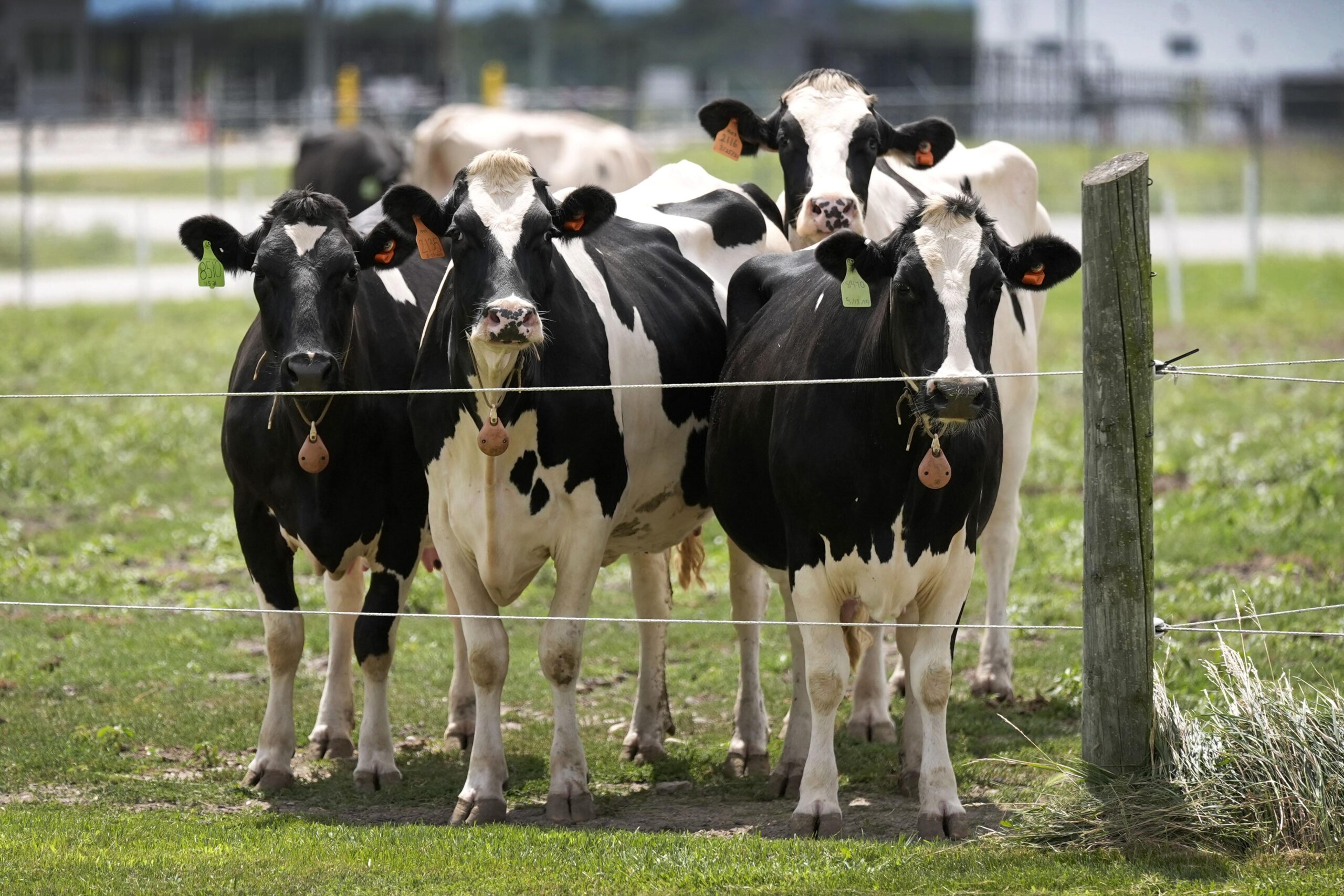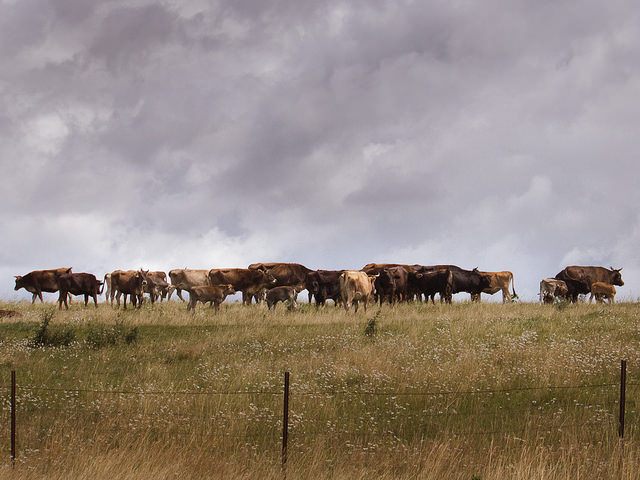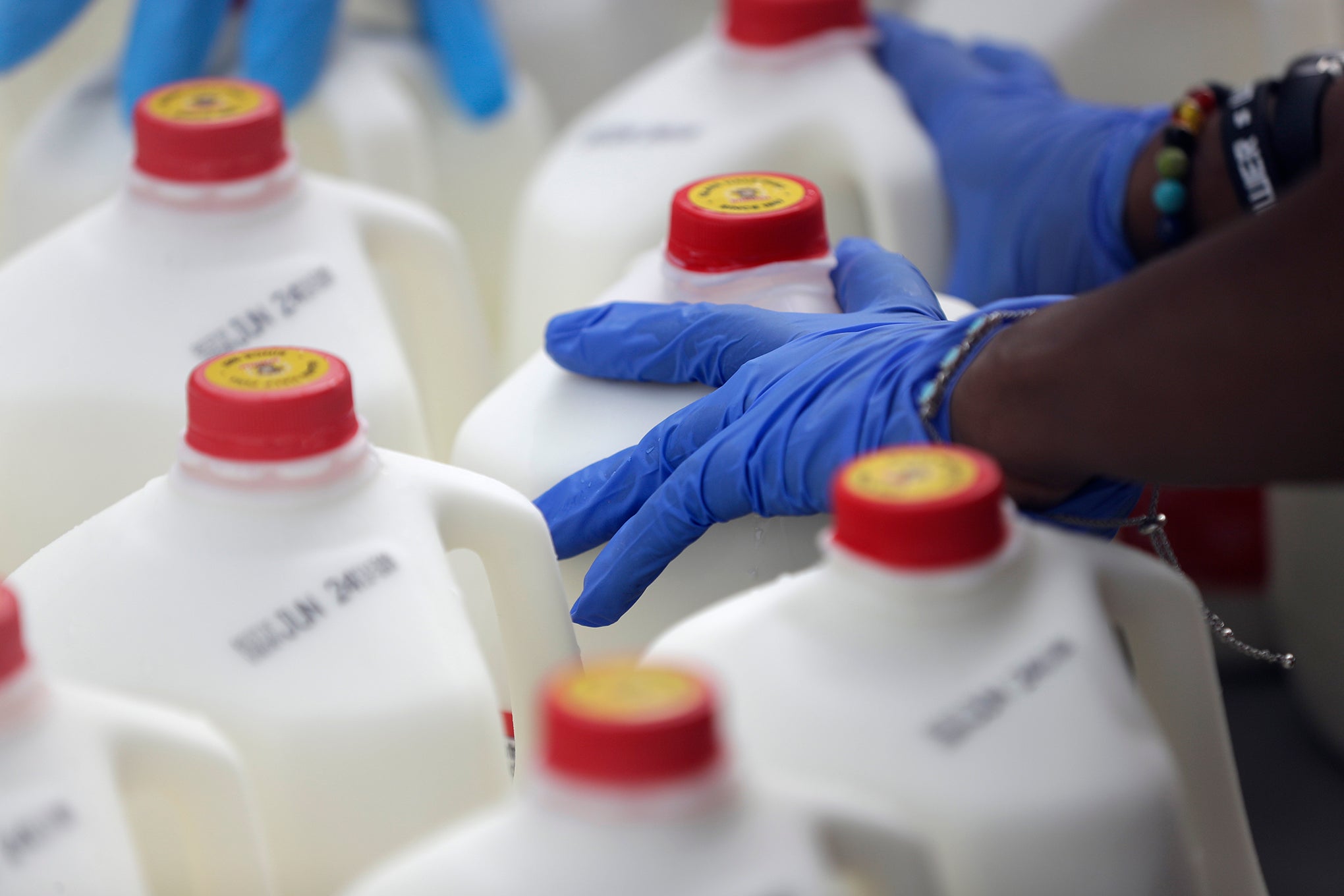Wisconsin farmers could get grants to use grazing practices that benefit soil health, animal welfare and water quality under a bipartisan bill making its way through the Wisconsin Legislature.
On Thursday, the state Senate’s agriculture committee held a hearing on a bill that would set up a pilot program offering technical support and grants of up to $40,000 for farmers that use managed grazing systems. The practice involves rotating cattle through smaller pastures to feed on perennial forage rather than grains, allowing time for those grasses to grow back.
State Sen. Jesse James and Rep. Todd Novak, both Republicans, introduced the bill along with Democratic Wisconsin Sens. Brad Pfaff and Mark Spreitzer, among others. A similar proposal received unanimous support in the Assembly’s agriculture committee last year, but it failed to advance through the full Legislature.
Stay informed on the latest news
Sign up for WPR’s email newsletter.
To remain competitive in global markets, James said many Wisconsin farmers have shifted to confining animals to smaller areas rather than letting them roam on pasture. He said incentives for rotational grazing practices would help farmers return grass-fed systems.
“This routine has many benefits, including significantly improving soil health and water quality,” James said. “It also reduces the amount of manure needed to be stored on the farm, further mitigating potential downsides related to spills and runoff.”
The bill is also backed by a coalition of groups dubbed the Clean Water Initiative, which includes the Dairy Business Association, Clean Wisconsin, the Wisconsin Land and Water Conservation Association and the Nature Conservancy.
Alex Madorsky, the conservancy’s associate director of government relations, said Brey Cycle Farm in Door County converted 140 acres of row crops to managed grazing, reducing annual soil erosion by more than 200 tons and phosphorus runoff by 126 pounds. Such nutrient runoff can lead to harmful algal blooms.
Carl Flaig with Flaig Family Farm in central Wisconsin said he began using grazing practices on his small dairy in 2005 due to high feed costs and challenges with growing row crops on highly erodible soil.
“It was very important for me in 2005 when I did transition over to grazing, because it gave me a healthier dairy herd and (I) was able to become more economical,” Flaig said.

Farmer says bill is critical as federal funds have been placed on hold
Since then, Flaig certified the operation as an organic dairy farm, relying on the help of federal funding to expand. However, he said the bill is critical now as those funds have been frozen under the Environmental Quality Incentives Program. Federal judges have blocked the freeze on federal grants and loans, including in a case brought by Wisconsin and 21 other states. The Trump administration is appealing the ruling in that case.
Sara Walling, water and agriculture program director for Clean Wisconsin, said the bill may help farmers amid uncertainty at the federal level.
“Farmers face an increasingly uncertain future in accessing federal dollars to rely on for that stability and innovation for cost-share practices like managed grazing,” Walling said.
Angie Sullivan is director of operations for the Dairy Grazing Apprencticeship, a nonprofit group that trains dairy farmers who use rotational or managed grazing systems. She said the bill would help position farmers to take advantage of the U.S. market for grass-fed dairy, which is expected to grow to around $6.9 billion by 2031.
“This growth represents a tremendous economic opportunity for Wisconsin and our rural communities,” Sullivan said. “It will support farmers with infrastructure funding, technical assistance and community connections, creating a strong foundation for success in both grass-fed and organic markets.”
Amy Penterman, a dairy farmer from Thorp, spoke on behalf of the Dairy Business Association. She and her husband run a 1,000-cow dairy and farm 1,100 acres. She said managed grazing systems can also reduce fuel, feed and facility costs for farmers while benefiting the environment. Penterman added that dairy farmers could use grazing practices to transition land to beef production, diversifying revenue streams for their farms.
“We are investing in a more sustainable, profitable and resilient future for Wisconsin agriculture,” Penterman said. “Not just for small farms, but for large dairy operations as well.”
The bill would create a half-time position within the Wisconsin Department of Agriculture Trade and Consumer Protection to support the program. The legislation would set aside $500,000 annually for the program through the state’s Environmental Fund.
Wisconsin Public Radio, © Copyright 2025, Board of Regents of the University of Wisconsin System and Wisconsin Educational Communications Board.





